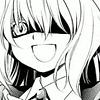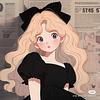Take a photo of a barcode or cover
medium-paced
Plot or Character Driven:
Character
Strong character development:
Complicated
Loveable characters:
Yes
Diverse cast of characters:
N/A
Flaws of characters a main focus:
Yes
At first I didn’t really get this story, but after sleeping on it, reading a few thoughts about it online, and thinking about the context in which it was written and published, I think I understand it a bit better…
I can’t say I agree with some of its messages
- self-sacrifice is the greatest thing you can do in life
- we are on earth purely to make others happy
...but I do agree with others
- everyone is searching for ways to make their life fulfilling, and that looks different for everyone.
- The things we cherish won’t last forever, and people or things can suddenly die or disappear but we should use our memory of them to live a full life.
- Death is not some grand event but it is quiet, sudden, and happens without notice.
Night on the Galactic Railroad is definitely leaning into the Buddhist view of the afterlife and the spirit, which makes sense considering Miyazawa’s background. I found Giovanni to be a compelling character in his selfishness and reluctance to let go of Campanelli, even though their relationship felt vague and ambiguous. Much of their friendship was left to the readers' imagination. The journey Giovanni and Campanelli take on the train is almost like Dante’s journey through hell to me, but obviously in a different context and almost dealing with a heaven-like vision of the after life instead of hell and purgatory.
It was easy to tell that it was an unfinished story, there are some parts in the middle that feel out of place or unpolished, and I wonder if we would have gotten to know more about how Giovanni and Campanelli became friends. But it being written after Miyazawa lost his sister and then published posthumously makes the story make more sense.
Minor: Child death
emotional
hopeful
reflective
sad
medium-paced
inspiring
fast-paced
Galaxy as a metaphor my beloved. An enchanting collection, even if the stories weren’t necessarily to my liking. I did enjoy The Star-circling Song and Night on the Galactic Railroad, the latter of which seems to be caught in a place of untranslatability—the English hiding something more profound despite the translator’s efforts (sorry Julianne Neville). Still, a heartfelt read.
Between the shores, the river flowed as quietly as death. p.109
When I was in elementary school, I participated in an after school storyteller club. We memorized and acted out short children’s stories such as Aesop’s fables. Then we’d go perform the stories for children in the younger grades. The story that I always told on my own was “The Crow and the Water Jug.” Miyazawa’s timeless-feeling fables in this collection reminded me of my love for that club. If I had known of his writing then, I’m sure I would have loved to recite and act out “The Nighthawk Star” short story.
While the crow in the Aesop’s Fable collection was revered for its persistence and thinking outside of the box, Miyazawa’s nighthawk was relatable as an outcast and looking for escape. To kids, I think the nighthawk is a sympathetic figure, longing for a place to belong. It’s really easy to feel like you’re not in the right place, that there’s got to be something greater ahead, a place where you fit in.
Night on the Galactic Railroad is a story I’ve been meaning to read for a long time. I was first introduced to the story when I was beginning my Japanese language studies and was in the astronomy club. Although this time I read it in English, I’d like to come back to the story next year and read it in Japanese.
There was a lot of symbolism going on in the story that reminded me of trying to read parables from the Bible as a kid. If I read this as a child, I would have picked up on basic messages of being kind to others while being vaguely aware that there was much more being said that I couldn’t quite pick up on yet because I wasn’t an adult.
The back of the book said that this story would result in the characters “learning the true meaning of friendship, happiness, and life itself.” I think that description is a disservice to the book. To me, that’s not what the quote below was conveying.
“No one knows what true happiness is, least of all me. But no matter how hard it is, if you keep to the path you deem to be true, you can overcome any mountain. With each step in that direction, people come closer to happiness,” said the lighthouse keeper, comfortingly.
“I agree,” said the young man, closing his eyes as if in prayer, “but to reach the truest happiness, one must make their way through many sorrows.” p. 87
I think that Miyazawa wanted to provide some kind of hint for children who are just beginning the lifetime journey that is trying to figure out what the point of being alive is. The best children’s books address real, complicated questions that children ask. We don’t have simple answers to kids who ask “Why was I born?” and “Why do people die?” It’s easy for us adults to shy away from honestly answering those questions because we have no idea if the answer, if we even have one, is good enough. Metaphors and storytelling are an imaginative way of taking children’s questions seriously. I think the sentiment in the following quote captures the way a child, given agency, can see the world.
I’m no longer afraid, even of a darkness, as fathomless as that is. I’m sure true happiness can even be found within it. Let’s search for it…however long it takes, or however far we must go. p. 107
Lastly, I think Night on the Galactic Railway makes even more sense when considering Miyazawa’s background. The translator’s note at the beginning states how Miyazawa’s family were merchants who took advantage of farmers and the working class. He wanted nothing to do with that life. In modern times, the ideas expressed below fall in-line with critiques on capitalism.
Oh, God. How many lives have I stolen to survive? Yet when it came my turn to be eaten by the weasel, I selfishly ran away. And for what? What a waste my life has been! If only I’d let the weasel eat me, I could have helped him live another day. God, please hear my prayer. Even if my life has been meaningless, let my death be of help to others. Burn my body so that it may become a beacon, to light the way for others as they search for true happiness. p. 101 (definitely gave me Joan of Arc vibes)
Rather than being saved by sacrificing others, I thought it might be better for us to see God together. p.86
adventurous
reflective
medium-paced
Plot or Character Driven:
A mix
Strong character development:
Yes
Loveable characters:
Complicated
Diverse cast of characters:
Complicated
Flaws of characters a main focus:
Complicated
Of the four stories, I liked the first three. A realization came to me that they are all in some way connected to the sky and the stars. The last story is the longest but I can’t pinpoint why I was glazing over the words. I rarely DNF so I finished the book but was not my favorite
...And here we have something which is probably very beautiful and lyrical in its original language, only to suffer from (what I assume to be) a basic and literal translation. These simply don't read easily, and while I can appreciate the imagery Miyazawa has provided, a somewhat more sympathetic translation is probably necessary to convey the full symbolism and artistry that Japanese readers have enjoyed for a century. Most of my previous knowledge of Miyazawa comes from the disconcerting anime adaptation of the title story, Night on the Galactic Railroad, and the adoption of the "Afterlife Express" trope throughout Japanese - and later Western - culture surely points to his influence. Were I ignorant of these facts, however, the writing in this slim volume could only come over as stilted and awkward. I suspect there are better translations available.
These 3 Kenji Miyazawa short stories read like traditional fables infused with a helping of early 20th century technology. Lead characters are challenged by mundane cruelties and their problems aren’t solved as much as they are endured. Peace and dignity is the reward for the perserverance.
“The Nighthawk Star” is the most traditional of the collection, the story of a bird who decides to fly away to the stars after being bullied by a hawk. The bird is initially rejected for starhood for lack of grace and money, an example of Miyazawa’s quiet humor.
“Signal and Signal-less” explore Miyazawa’s fascination with railroads, and its anthropomorphic train signals in courtship vaguely reminded me of the world of Thomas the Tank Engine. A crass utility pole threatens the budding romance, leaving the signals to appeal to a strange mix of Catholic saints, Thomas Edison, and railway pioneer George Stephenson. In the end, a kindly warehouse offers guidance that leads to a moment of clarity.
“Night on the Galactic Railroad” is a deeper, dreamlike tale about a troubled boy riding a train from earth to the heavens and back. Giovanni’s errand to retrieve milk for his sick mother somehow finds him on a train to the heavens and back. Strange encounters during the journey influence his notions of happiness and the meaning of life and death.
“The Nighthawk Star” is the most traditional of the collection, the story of a bird who decides to fly away to the stars after being bullied by a hawk. The bird is initially rejected for starhood for lack of grace and money, an example of Miyazawa’s quiet humor.
“Signal and Signal-less” explore Miyazawa’s fascination with railroads, and its anthropomorphic train signals in courtship vaguely reminded me of the world of Thomas the Tank Engine. A crass utility pole threatens the budding romance, leaving the signals to appeal to a strange mix of Catholic saints, Thomas Edison, and railway pioneer George Stephenson. In the end, a kindly warehouse offers guidance that leads to a moment of clarity.
“Night on the Galactic Railroad” is a deeper, dreamlike tale about a troubled boy riding a train from earth to the heavens and back. Giovanni’s errand to retrieve milk for his sick mother somehow finds him on a train to the heavens and back. Strange encounters during the journey influence his notions of happiness and the meaning of life and death.








